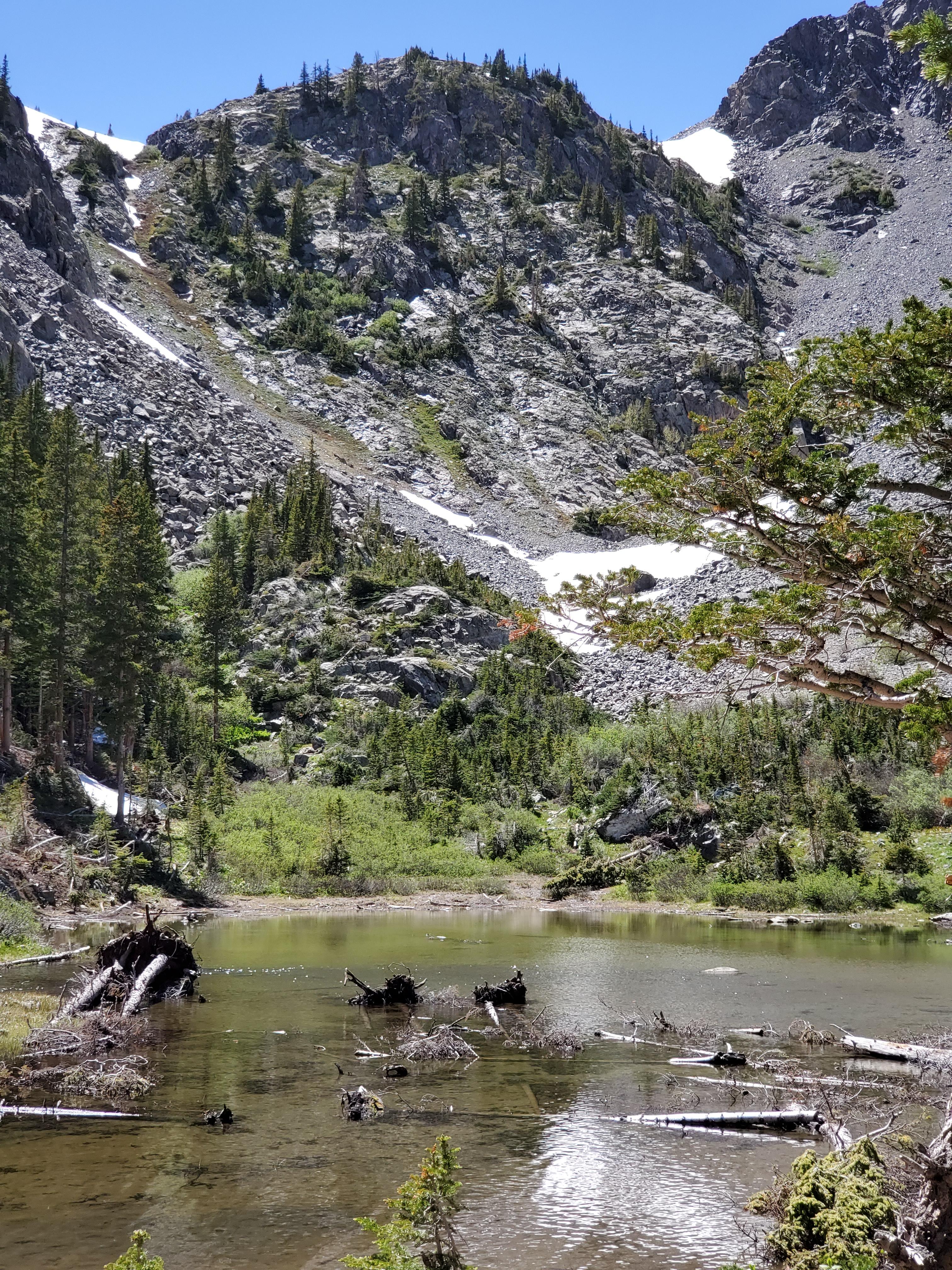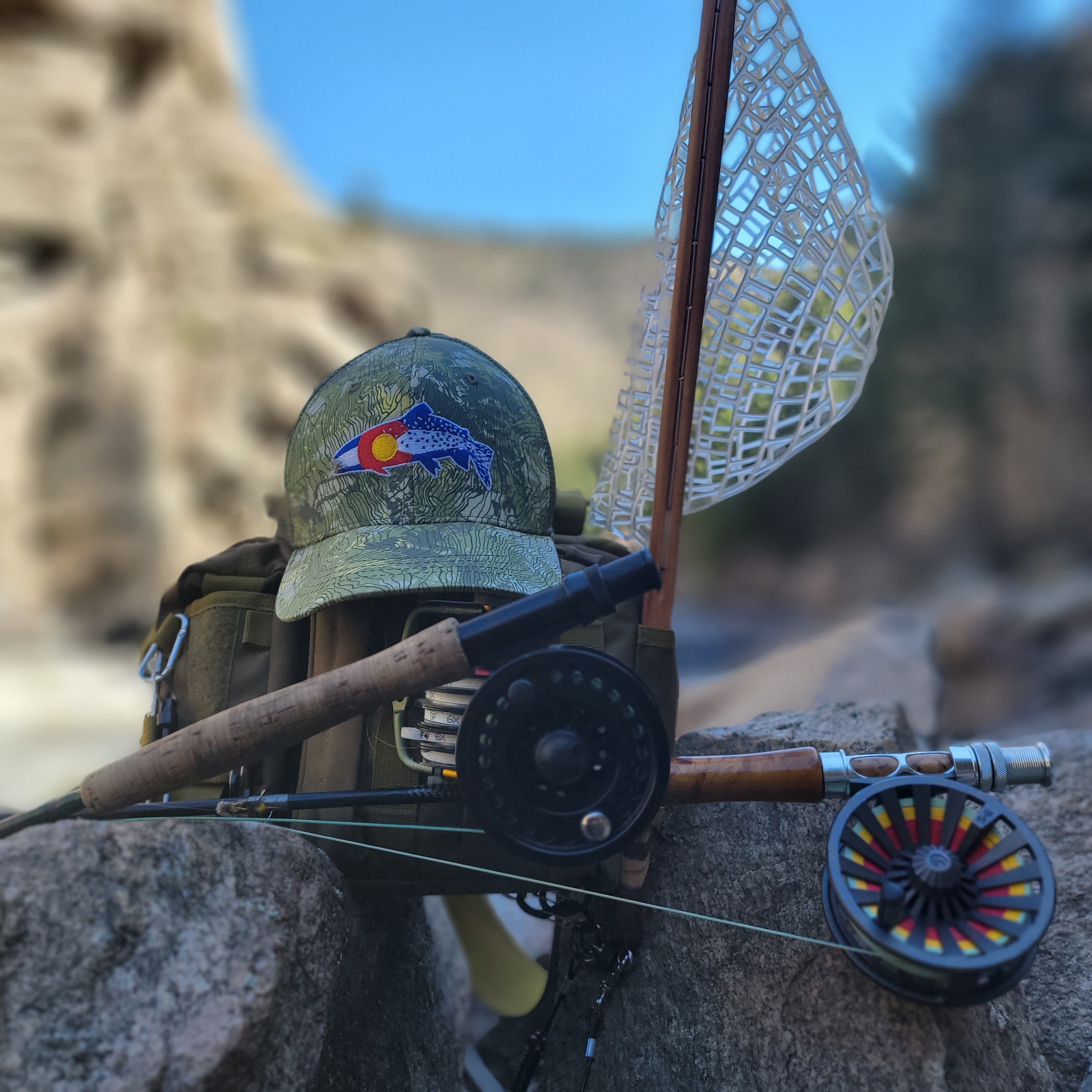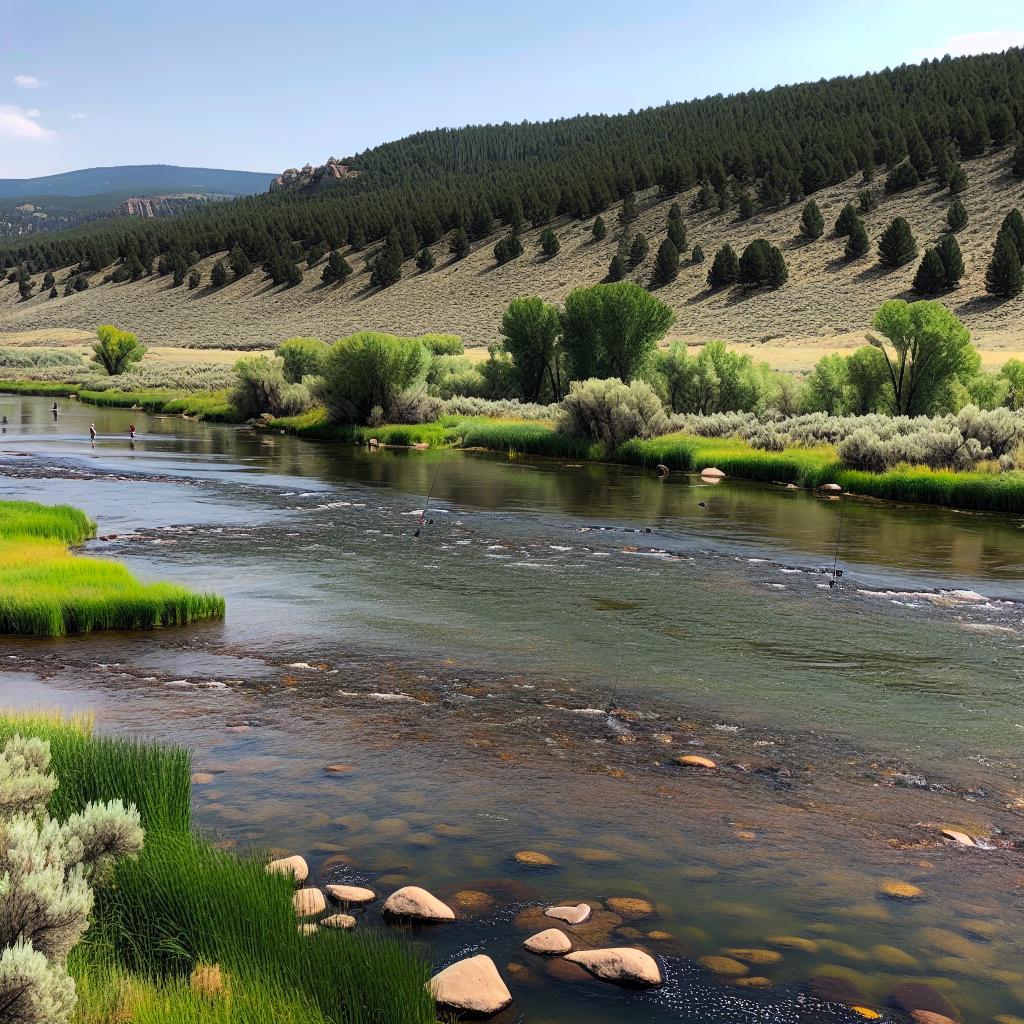A lite guide to spring dry fly fishing in Colorado. It highlights the best times to fish, including early morning, late morning to early afternoon, and late afternoon to early evening. It discusses the types of insect hatches to expect during this season and provides tactics for successful dry fly fishing. Whether targeting midges, mayflies, or caddisflies, this guide will help you plan your fly fishing adventure in Colorado's beautiful waters.
The article emphasizes the importance of matching the hatch by selecting dry flies that mimic the insects trout are feeding on in Colorado's waters. It underscores the significance of mastering presentation techniques, such as casting upstream and drifting the fly naturally to entice trout to rise to the surface.
Fly dressing with floatant is recommended to keep the dry fly afloat and visible. Studying water and structure, as well as covering different depths with various fly patterns, are key strategies for successful dry fly fishing in Colorado.
Essential Tips for Successful Spring Dry Fly Fishing in Colorado
- Time it Right: Learn the optimal times of the day for dry fly fishing in Colorado's spring season, including early morning, late morning to early afternoon, and late afternoon to early evening.
- Master the Hatches: Familiarize yourself with the prominent insect hatches during spring, such as midges, mayflies, and caddisflies. Understanding their life cycles and behavior will help you choose the right fly patterns.
- Location Matters: Explore different water sections like riffles, runs, seams, and calm pockets that trout love to frequent during hatches. Observe the river closely for rising fish and signs of activity to pinpoint productive spots.
- Adapt with the Weather: Be prepared to adjust your fishing strategies based on weather conditions. Overcast or rainy days can keep trout active near the surface throughout the day, increasing your chances of success.
- Be Observant and Adaptive: Pay attention to rises, feeding patterns, and other signs of fish activity. Read the river, watch for foam lines, and look for targets near structure. Adapting your approach based on the conditions will maximize your dry fly fishing success.
When Does Spring Dry Fly Fishing begin in Colorado?
During the winter, cold temperatures and icy conditions make it difficult for fish to actively feed on the surface. As spring approaches and the weather begins to warm up, the rivers and streams start to thaw, and insect activity increases.
- March is often the month when anglers start to see the first signs of insect hatches in Colorado. Midges, the smallest of aquatic insects, are the first to emerge. These tiny flies can be found in abundance, particularly in tailwaters and stillwaters. While midges are small, they can provide excellent dry fly fishing opportunities, especially for trout that are emerging from their winter lethargy.
- As the spring progresses, more insect hatches occur. Mayflies, caddisflies, and stoneflies start to hatch in larger numbers. These larger insects attract the attention of hungry trout, resulting in more active dry fly fishing. The timing of these hatches can vary depending on specific locations and elevation. In higher mountain areas, hatches may be slightly delayed compared to lower-elevation rivers.
It's essential to pay attention to the specific conditions of the river you're planning to fish. Factors like water temperature, water flow, and weather conditions can greatly influence insect activity and, subsequently, dry fly fishing opportunities. Local fishing reports, which can be obtained from fly shops or online resources, are a valuable source of information to determine the current conditions and hatch activity in different Colorado regions.
Overall, the period from March to May in Colorado offers a great window of opportunity for dry fly fishing as the insect hatches increase and the trout become more active on the surface. By keeping a close eye on local conditions and being prepared with a selection of dry flies imitating the prevalent insect species, anglers can maximize their chances of success and enjoy a memorable dry fly fishing experience in the beautiful Colorado waters.
While specific times of the day for dry fly fishing can vary depending on various factors, there are some general guidelines that anglers can follow during the spring season in Colorado.
When is the Best Time of Day to Dry Fly in Colorado
Early morning: During the early morning hours, typically from sunrise until about mid-morning, you may encounter hatches of midges and some mayflies. Trout tend to be more active at this time as the water temperatures rise along with the increasing daylight. Targeting riffles, runs, and seams can be productive during this time as fish actively feed near the surface.
- Early morning to early afternoon: As the day progresses and temperatures rise, insect activity becomes more prominent. Mayflies and caddisflies tend to hatch more intensely during this period. The late morning to early afternoon, roughly from 10 am to 2 pm, can be a prime time for dry fly fishing. Look for slower water sections, foam lines, and calm pockets where trout gather to feed on emerging insects.
- Late afternoon to early evening: As the day nears its end, the late afternoon to early evening can provide some of the most exciting dry fly fishing opportunities. Mayfly hatches, such as the famous Blue Winged Olives (BWOs), can attract trout to the surface during this time. Caddisflies and stoneflies may also hatch in significant numbers, triggering aggressive feeding responses from fish. Consequently, the late afternoon to early evening, typically from 4 pm to dusk, can be highly productive for dry fly fishing.
It is important to note that these are general guidelines, and various factors, such as water conditions, weather patterns, and specific locations, can influence insect activity and fish behavior. Observing the river closely, paying attention to rises and other signs of activity, and adapting your fishing strategies will improve your chances of success.
Remember that fishing can still be productive outside of these specific periods, particularly during overcast or rainy days when trout may be more active near the surface throughout the day. Being observant and adaptable to the conditions at hand will ultimately determine the most favorable times for dry fly fishing during your specific outing in Colorado.
.png?width=300&height=100&name=Copy%20of%20Rise%20Beyond%20Logo%2012.31.24%20(300%20x%20100%20px).png)
.png)

-1.png?width=600&height=400&name=fly%20fishing%20in%20colorado%20(20)-1.png)
.png?width=600&height=400&name=fly%20fishing%20in%20colorado%20(4).png)


